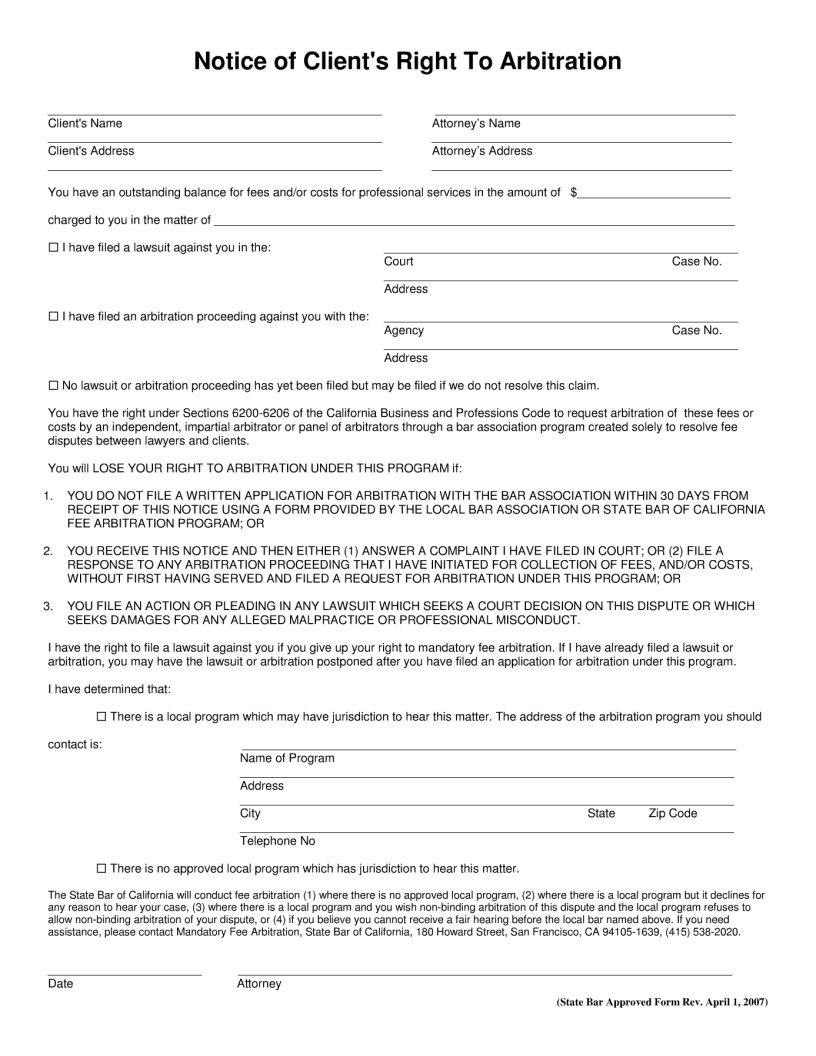In the realm of resolving disputes between clients and service providers, the Client Arbitration Form emerges as a pivotal document. Its purpose extends beyond mere documentation; it acts as a foundational agreement that delineates the process through which arbitration, an alternative to courtroom litigation, will be conducted. This form typically outlines critical details such as the scope of issues eligible for arbitration, the rules governing the arbitration process, and the roles and responsibilities of each party involved. Additionally, it specifies the arbitration forum selected by the parties and may include provisions regarding the confidentiality of the proceedings. By opting for arbitration, parties aim for a resolution that is not only efficient and less formal but also potentially less adversarial than traditional court proceedings. The form, therefore, is not just an administrative prerequisite but a strategic tool that shapes the pathway to dispute resolution, emphasizing the importance of clear communication and mutual agreement on the procedural framework. It underscores the significance of informed consent, ensuring that all parties understand and agree to the arbitration process as a means of resolving their disputes, highlighting its role in fostering an environment conducive to fair and equitable resolutions.
| Question | Answer |
|---|---|
| Form Name | Client Arbitration Form |
| Form Length | 1 pages |
| Fillable? | No |
| Fillable fields | 0 |
| Avg. time to fill out | 15 sec |
| Other names | client arbitration, client's right to arbitrate solano county, california bar association right to fee arbitration form, santa clara county bar association fee arbitration |
